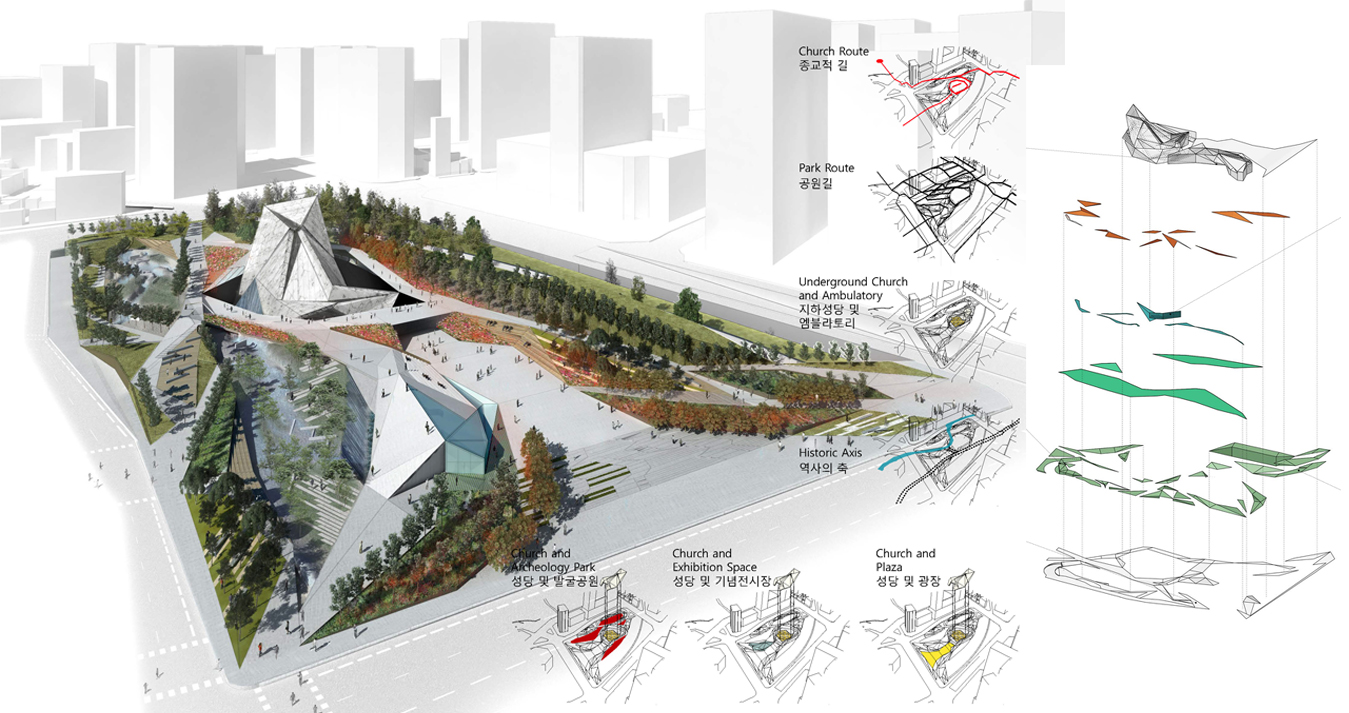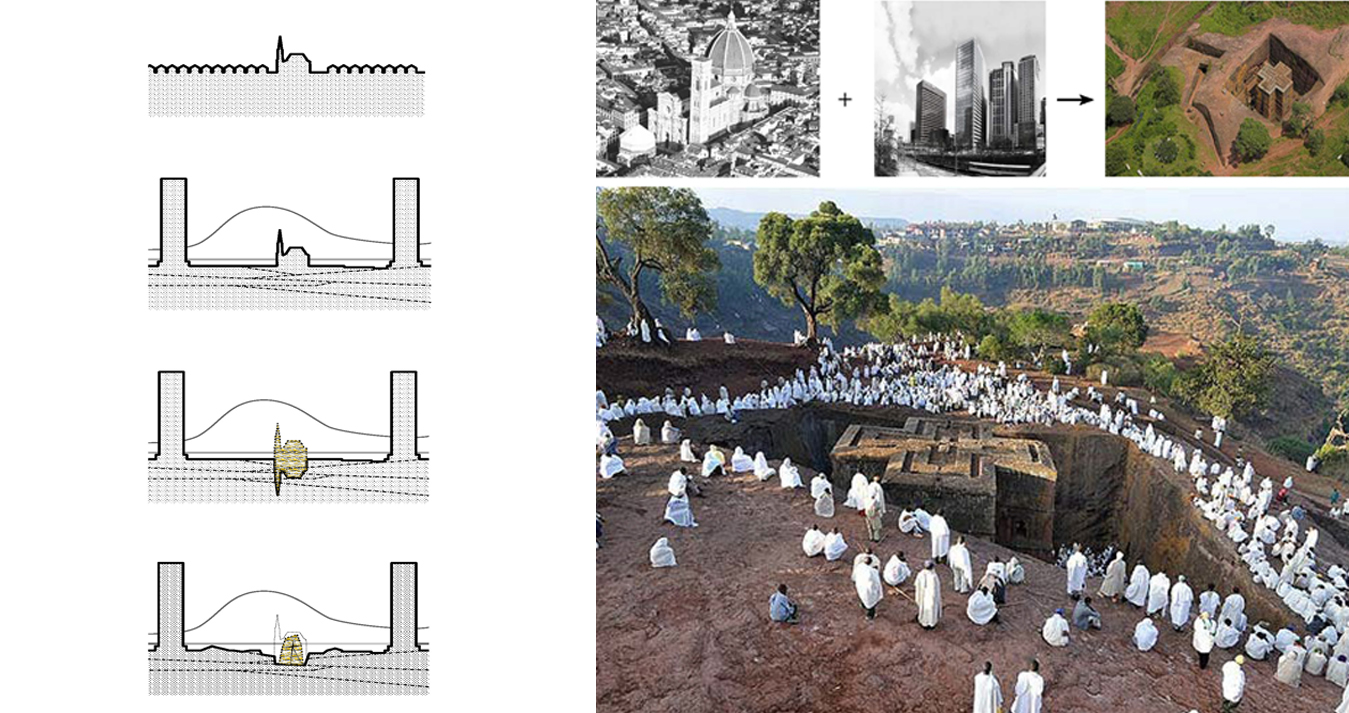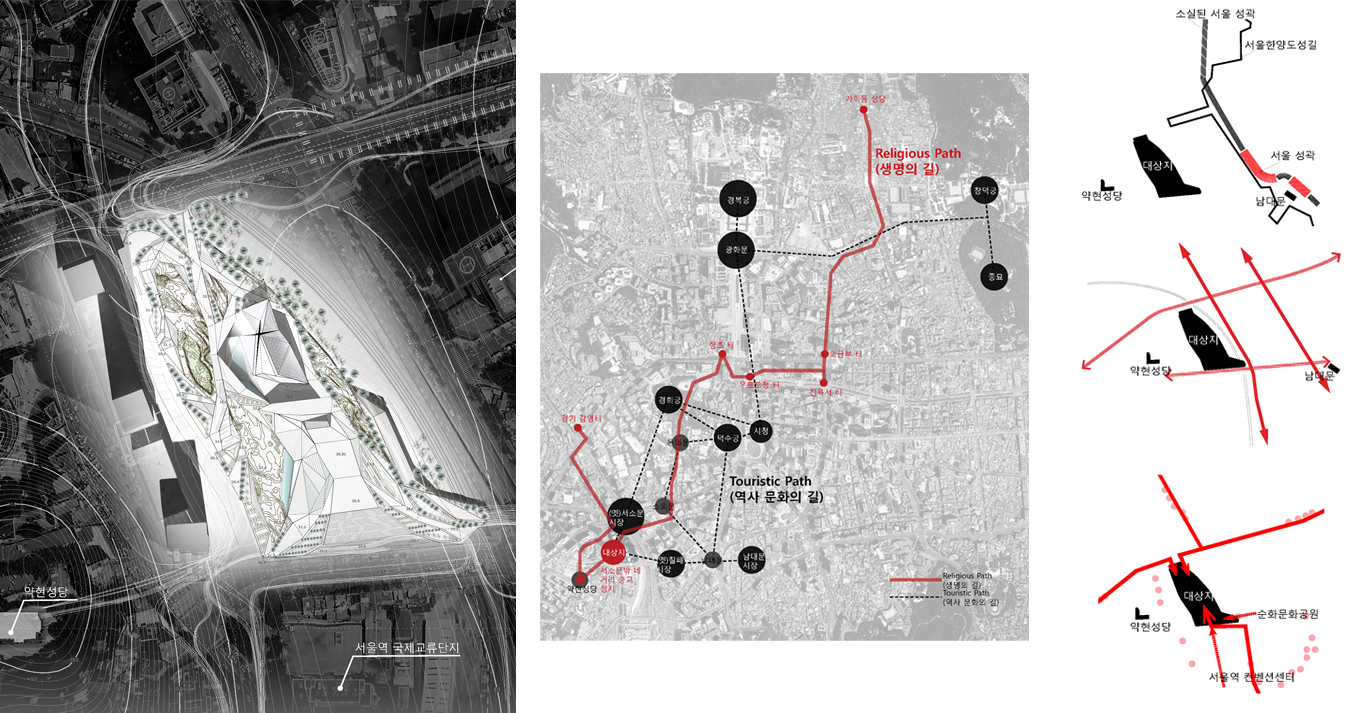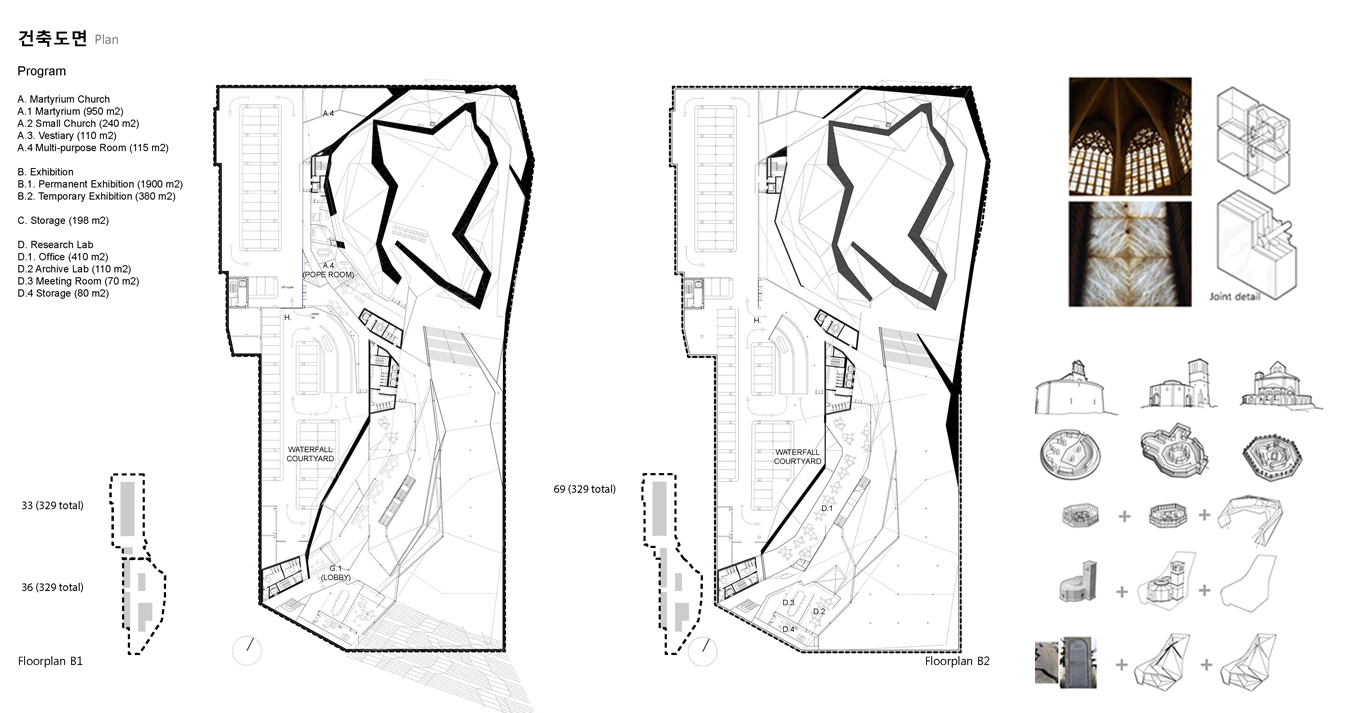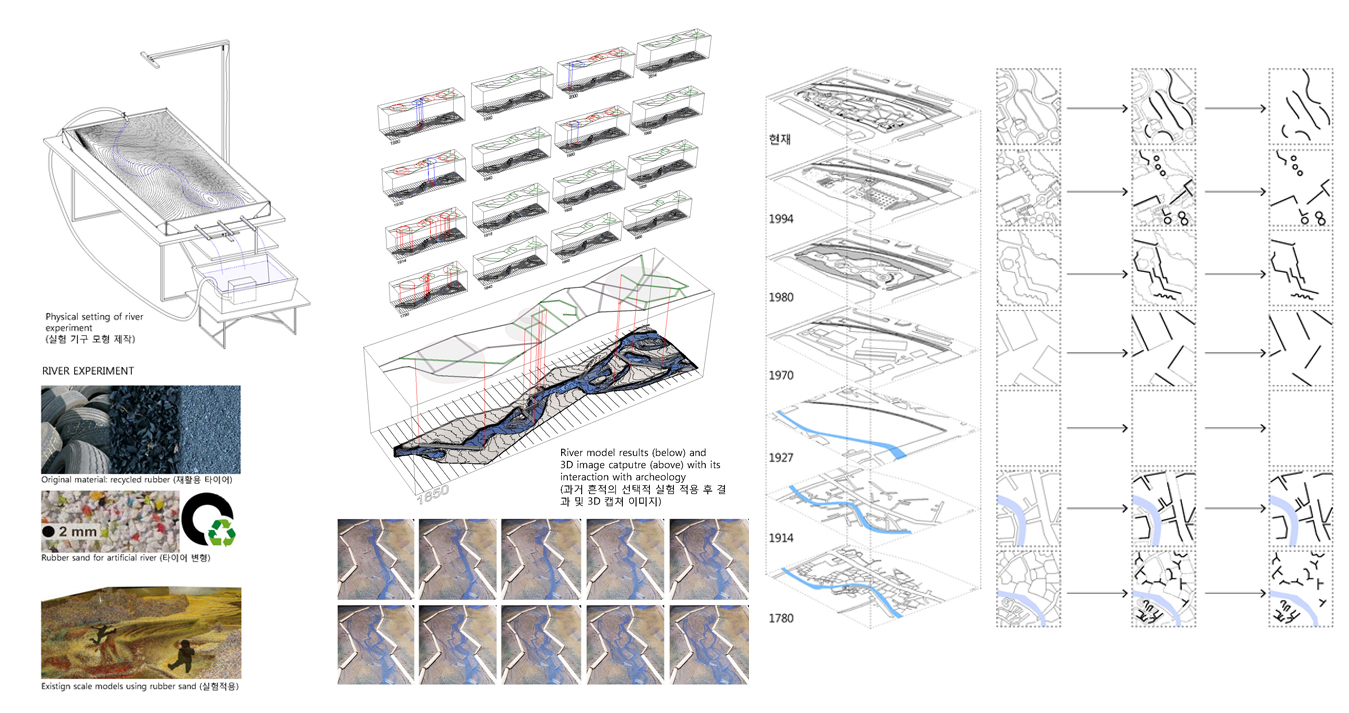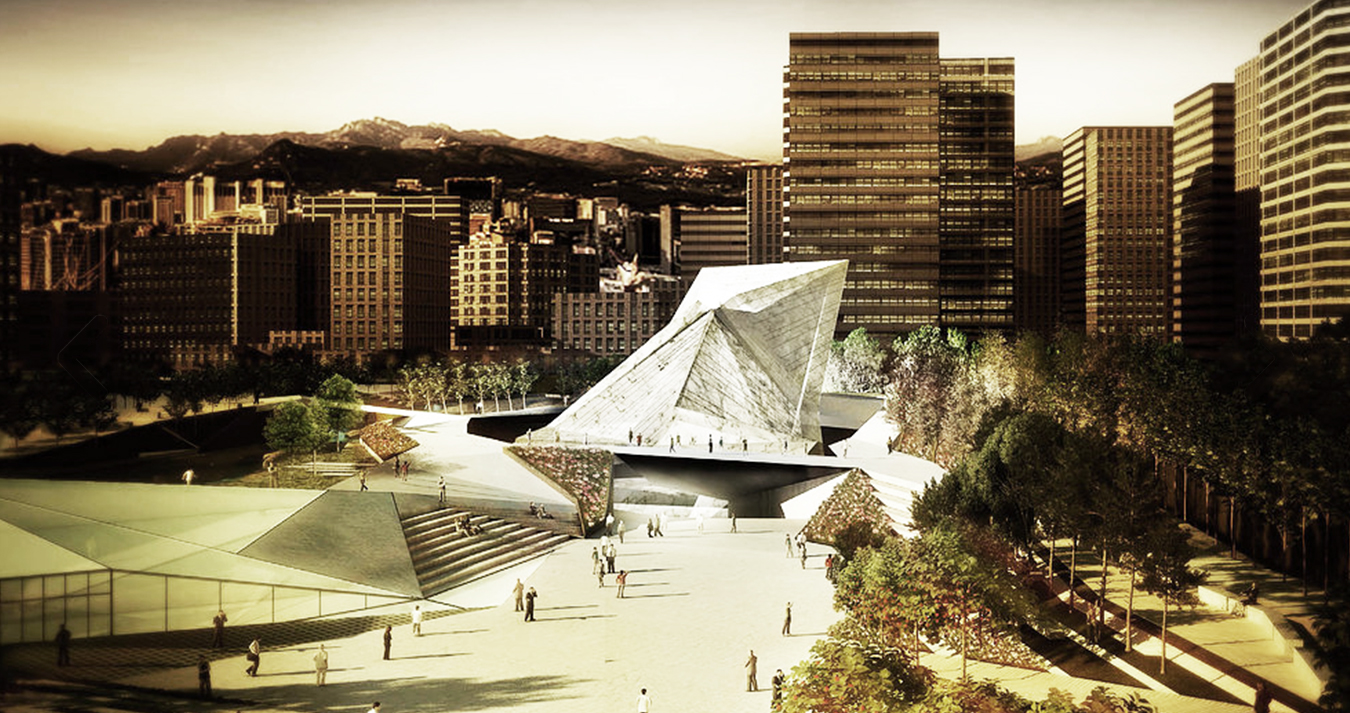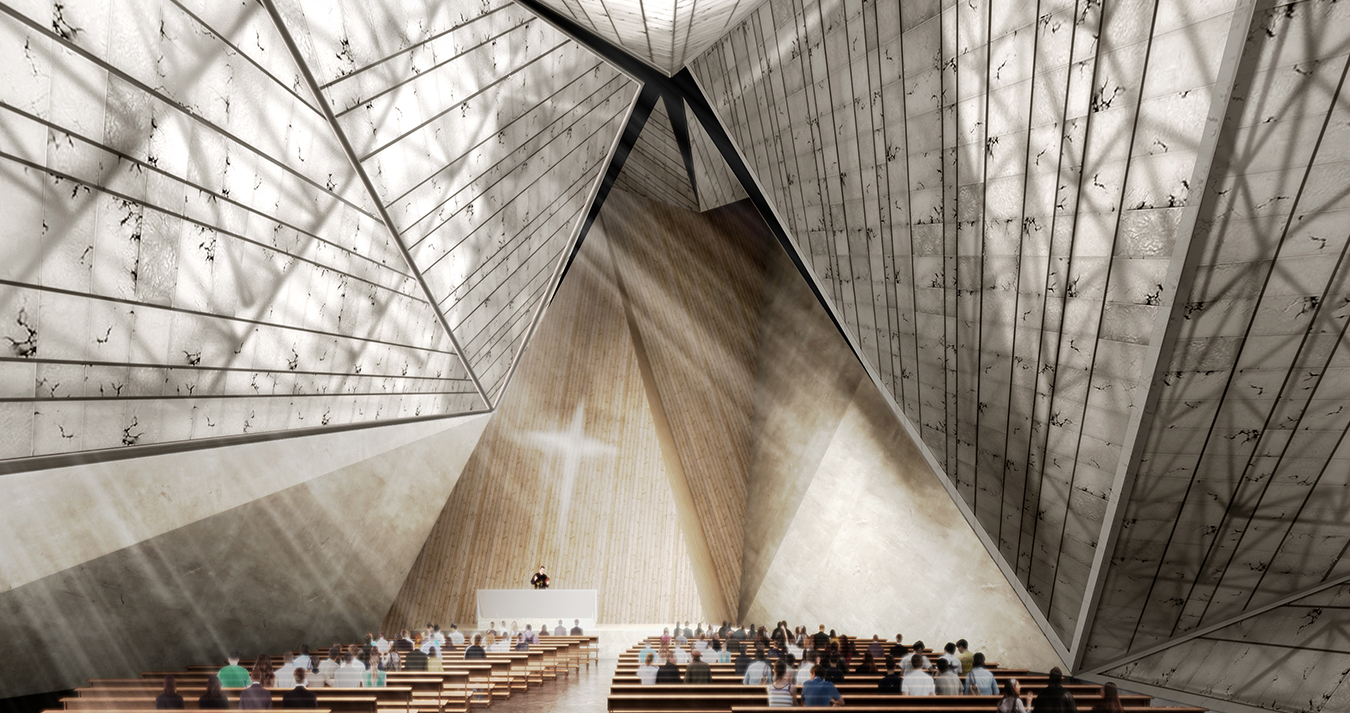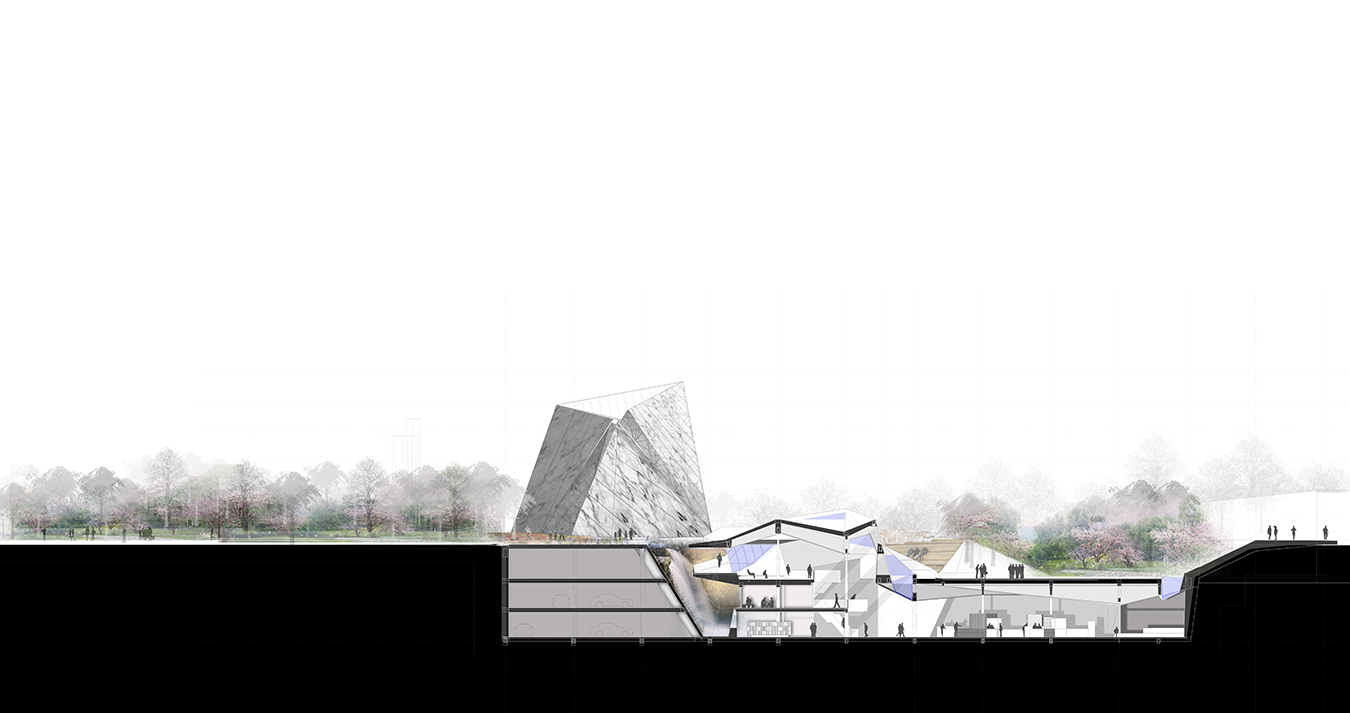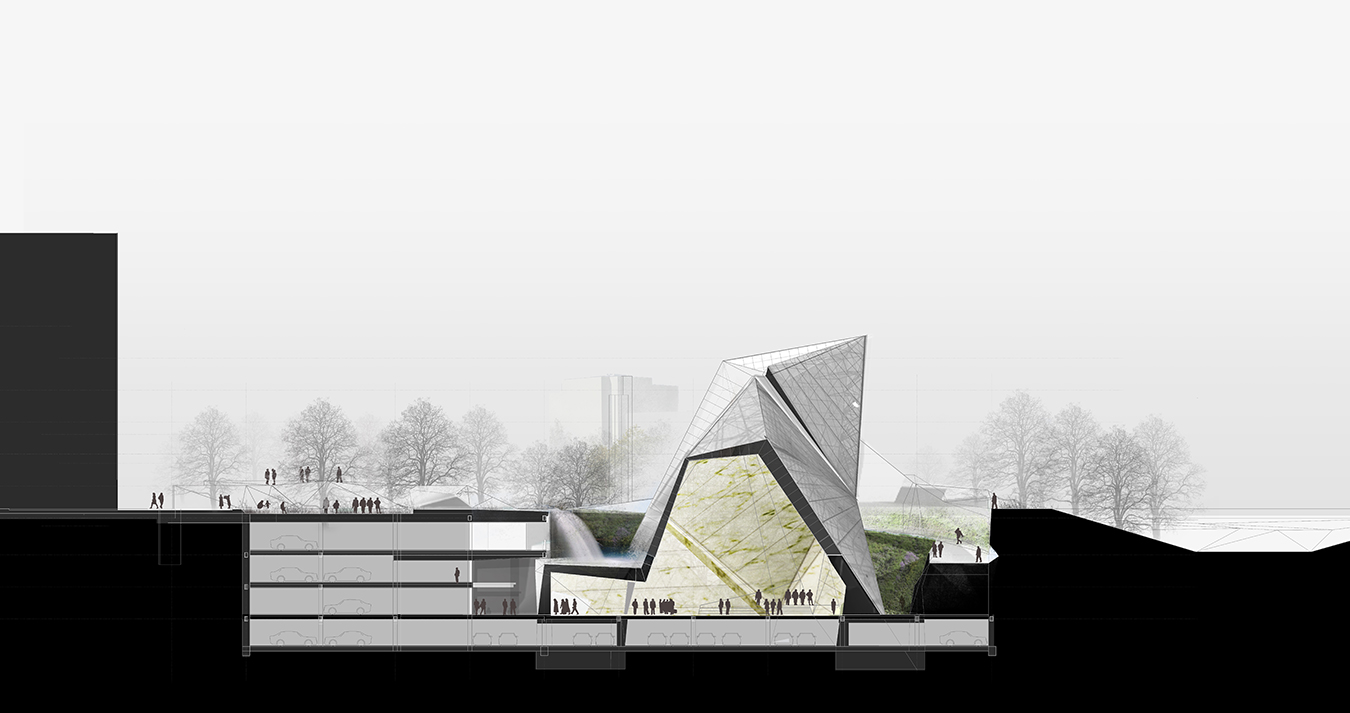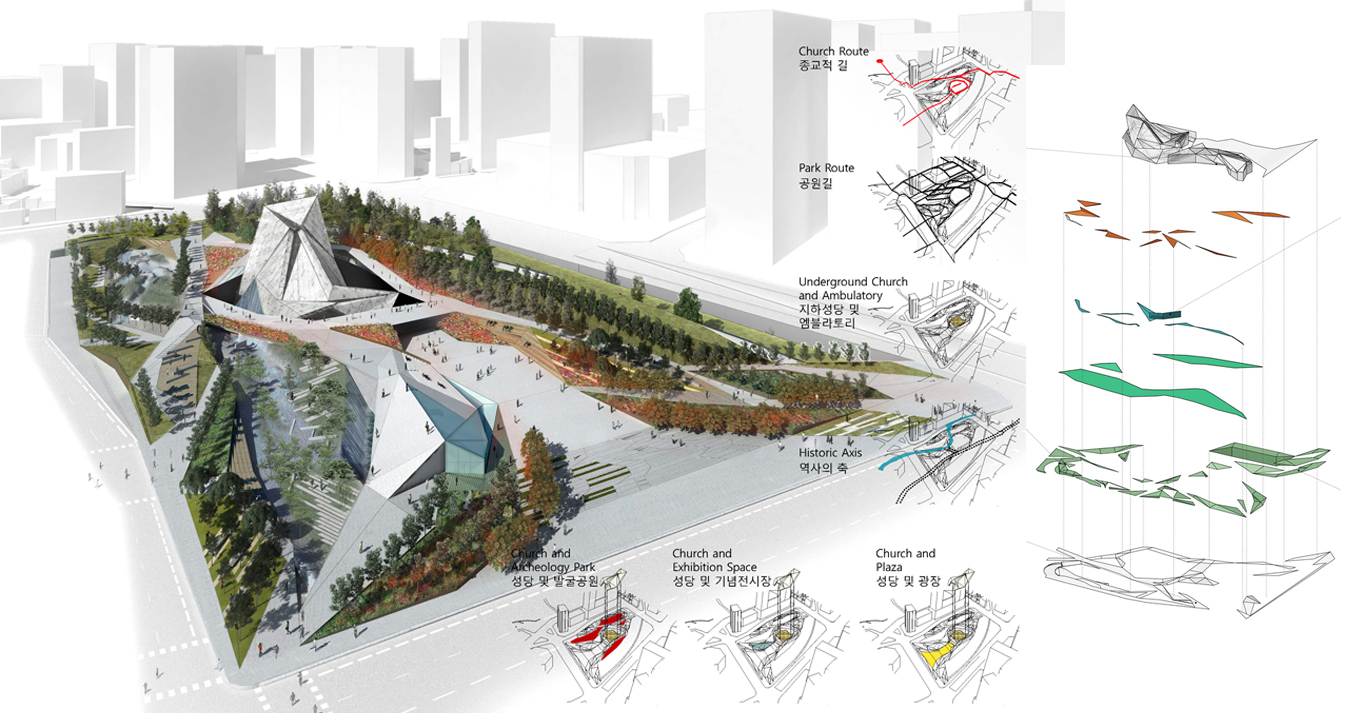Seosomun Church and Historical Park
Christian churches have historically enjoyed a central position in the city; traditionally, they are landmarks, icons and places simultaneously. These three conditions are currently challenged by modernity; which in the context of Seosomun-bakk Site raises the following design questions:
If the Scale of the Church has historically provided the status of a landmark in the city: how can we create a landmark in a high rise environment?
Seosomun-bakk Historic Site is in the intersection between several urban transport modes: How can a Church, a space of place, a space of calm and spiritual meditation be integrated in a space of flows?
The Seosomun-bakk Historic Site is located in an area with great historical value. How shall the
XXIC Church embrace history and meaning?
The project creates a landmark by emphasizing its underground condition and by building an imaginary archaeology that unveils the site historical traces. Two routes are proposed: one is dedicated to the religious people and defined by an ambulatory that connects the ground level with the underground level of the church. The ambulatory is a piece of architecture present in pilgrims churches. The pilgrim descends to the pray hall walking down around the church through the ambulatory. The ambulatory is an outdoor excavated space that surrounds the church, enclosing it and by doing that it emphasizes its solemnity as a place.
Imaginary archaeology understands history as a narrative built from fragments. By unveiling the different historical layer we can see that there is not a single canal outline or path. Historically, the city has moved in several occasions the canal and the path in order to accommodate its needs. The overlap of historical layers shows how the city and its citizens negotiate in order to shape its future. By proposing an interactive dynamic interface project of imaginary archaeology aims to emphasize harmony through this negotiation which not only is reflected in the city past but is projected into the future of the city.
- [COMPETITION]
- [status] ideas
- [location] Seosomun, South Korea
- [program] Cultural
- [date] 2014
- [area] 4800 m2
Seosomun Church and Historical Park
Christian churches have historically enjoyed a central position in the city; traditionally, they are landmarks, icons and places simultaneously. These three conditions are currently challenged by modernity; which in the context of Seosomun-bakk Site raises the following design questions:
If the Scale of the Church has historically provided the status of a landmark in the city: how can we create a landmark in a high rise environment?
Seosomun-bakk Historic Site is in the intersection between several urban transport modes: How can a Church, a space of place, a space of calm and spiritual meditation be integrated in a space of flows?
The Seosomun-bakk Historic Site is located in an area with great historical value. How shall the
XXIC Church embrace history and meaning?
The project creates a landmark by emphasizing its underground condition and by building an imaginary archaeology that unveils the site historical traces. Two routes are proposed: one is dedicated to the religious people and defined by an ambulatory that connects the ground level with the underground level of the church. The ambulatory is a piece of architecture present in pilgrims churches. The pilgrim descends to the pray hall walking down around the church through the ambulatory. The ambulatory is an outdoor excavated space that surrounds the church, enclosing it and by doing that it emphasizes its solemnity as a place.
Imaginary archaeology understands history as a narrative built from fragments. By unveiling the different historical layer we can see that there is not a single canal outline or path. Historically, the city has moved in several occasions the canal and the path in order to accommodate its needs. The overlap of historical layers shows how the city and its citizens negotiate in order to shape its future. By proposing an interactive dynamic interface project of imaginary archaeology aims to emphasize harmony through this negotiation which not only is reflected in the city past but is projected into the future of the city.


